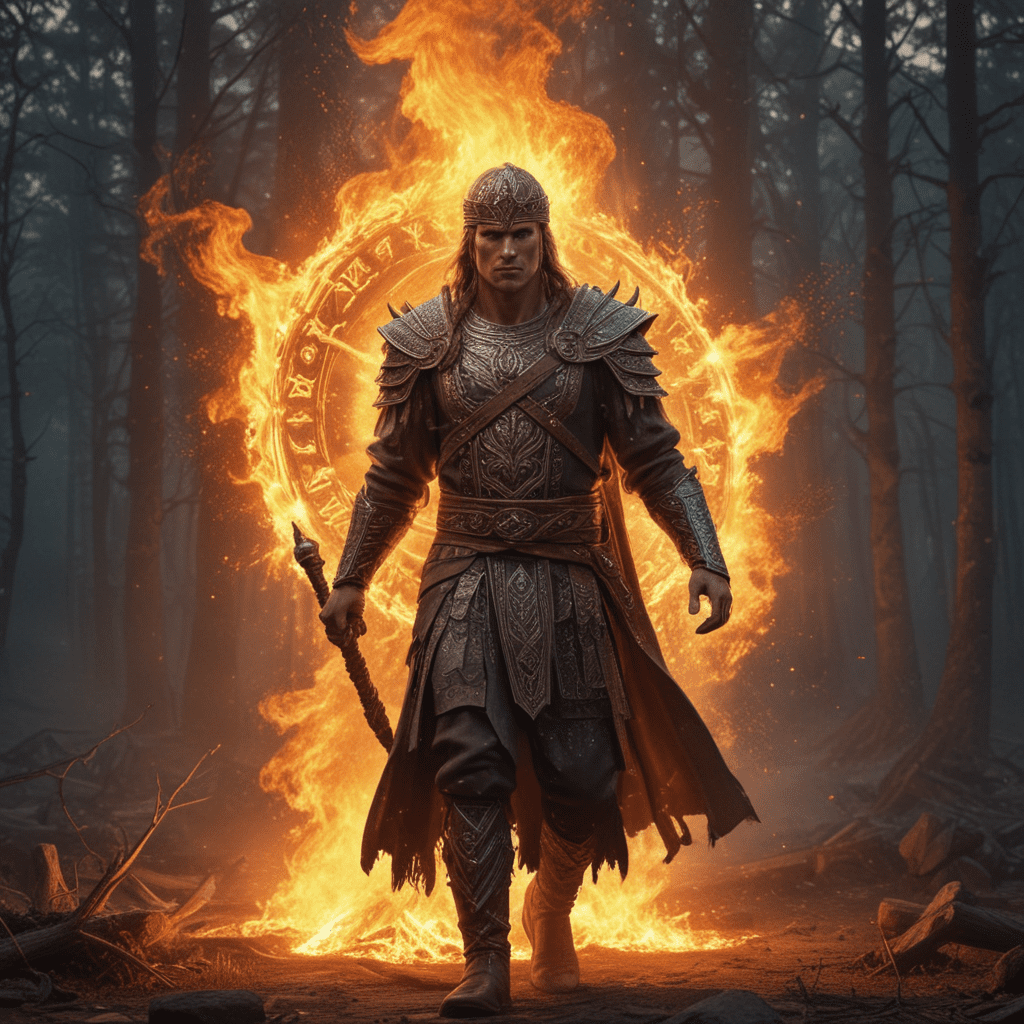Unveiling the Mysteries: The Enchanted Weapons of Mythology
I. Introduction
Enchanted weapons in mythology are often defined as tools of power, imbued with magical properties and significant symbolism. These weapons not only serve as instruments in battles but also carry deeper meanings that resonate with the themes of fate, destiny, and heroism. Throughout various mythological narratives, weapons play a crucial role in shaping the journey of heroes and the outcomes of epic tales.
This article will explore the multifaceted role of enchanted weapons in mythology, examining their symbolism, cultural significance, and the legendary arms from different traditions. We will delve into the enchanting world of Greek, Norse, and Eastern mythologies, while also considering their influence on modern fantasy storytelling.
II. The Role of Weapons in Mythological Narratives
Weapons in mythology often symbolize more than just physical might; they embody power, authority, and the struggle between good and evil. Let’s explore some key aspects:
- Symbolism of power and authority: Weapons often signify the right to rule or the embodiment of a hero’s strength.
- Tools of fate and destiny: Many narratives revolve around the idea that weapons are crucial to fulfilling one’s destiny.
- Cultural significance: Different cultures attribute unique meanings to weapons, reflecting their values and beliefs.
III. Legendary Weapons from Greek Mythology
Greek mythology is rich with stories of enchanted weapons that have become iconic over time.
- Excalibur: Although predominantly associated with Arthurian legend, Excalibur has roots in earlier myths, symbolizing rightful sovereignty and divine right.
- The Shield of Achilles: Crafted by Hephaestus, this shield represented ultimate craftsmanship and was said to depict the entire cosmos.
- The Bow of Odysseus: This weapon not only tested the suitors’ worthiness but also signified Odysseus’s heroism and cunning.
IV. Enchanted Weapons in Norse Mythology
Norse mythology features several enchanted weapons, each with its own unique powers and significance.
- Mjölnir: Thor’s hammer, known for its protective abilities and capability to return to him after being thrown, symbolizes strength and protection.
- Gungnir: Odin’s spear, famed for its unerring accuracy, represents the inevitability of fate and the power of the All-Father.
- Significance in Valhalla: Weapons in Valhalla are seen as instruments of glory, with fallen warriors receiving enchanted arms as rewards.
V. The Mystical Arms of Eastern Mythologies
Eastern mythologies also celebrate a range of enchanted weapons that carry profound meanings.
- The Kusanagi-no-Tsurugi: A legendary Japanese sword that symbolizes the power to control the wind and is associated with the goddess Amaterasu.
- The Vajra: In Buddhism, this weapon represents spiritual power and the ability to penetrate ignorance.
- Symbolism in Hindu epics: Weapons like the bow of Rama in the Ramayana represent the triumph of good over evil and divine intervention.
VI. The Influence of Enchanted Weapons on Modern Fantasy
The impact of mythological weapons extends into contemporary storytelling and popular culture.
- Mythology in modern storytelling: Many authors and creators draw inspiration from mythological weapons to craft their narratives.
- Popular modern fantasy weapons: Examples include the sword of Gryffindor from Harry Potter and Stormbreaker from Marvel Comics, both echoing mythological themes.
- Video games and literature: Many games feature enchanted weapons, incorporating lore and mythology into gameplay mechanics.
VII. The Craftsmanship and Origins of Enchanted Weapons
The creation of enchanted weapons often involves a blend of divine intervention and mortal skill.
- Divine versus mortal creation: Many mythological weapons are said to be forged by gods, while others are crafted by skilled mortals with divine blessings.
- Significance of materials: The materials used in weapon creation often hold symbolic meaning, such as celestial metals or stones.
- Rituals and blessings: The process of crafting these weapons often involves rituals to invoke protection, power, or guidance from deities.
VIII. The Hero’s Journey and Enchanted Weapons
Enchanted weapons are often integral to the hero’s journey, serving as tools of transformation and growth.
- Relationship between heroes and their weapons: Many heroes are defined by their weapons, which often reflect their inner qualities and struggles.
- Transformative power: The act of wielding an enchanted weapon can catalyze a character’s growth and evolution throughout their journey.
- Case studies: Prominent examples include King Arthur with Excalibur and Beowulf with his sword, Hrunting.
IX. The Psychological and Cultural Impact of Enchanted Weapons
Enchanted weapons resonate deeply with psychological archetypes and cultural narratives.
- Exploration of archetypes: Weapons symbolize various archetypes in storytelling, reflecting societal values and fears.
- Metaphors for personal struggles: Many characters’ journeys with their weapons mirror real-life challenges and triumphs.
- Contemporary resonance: The themes of enchanted weapons continue to resonate in modern culture, often serving as a metaphor for personal empowerment.
X. Conclusion
In summary, enchanted weapons in mythology serve as powerful symbols of authority, fate, and heroism. They are woven into the fabric of countless narratives across cultures, reflecting the values and struggles of humanity. The legacy of these mythological weapons endures in modern storytelling, shaping the fantasy genres we love today.
The importance of enchanted weapons goes beyond mere physicality; they embody the essence of transformation, empowerment, and the eternal battle between good and evil. As we continue to explore these narratives, we uncover deeper insights into our own journeys and the symbols that guide us.



